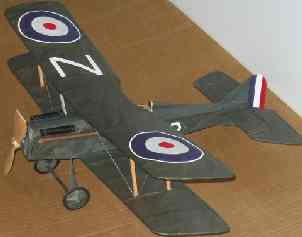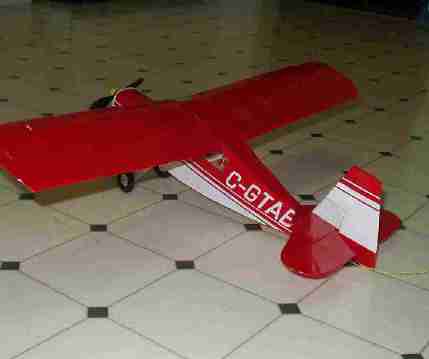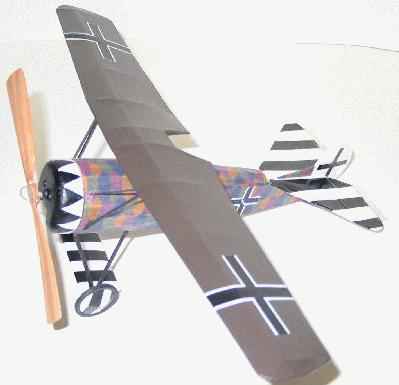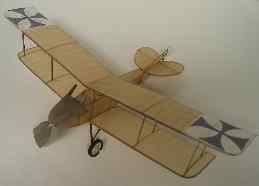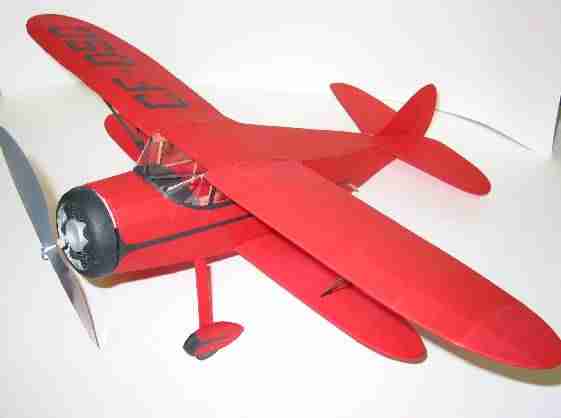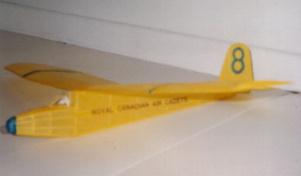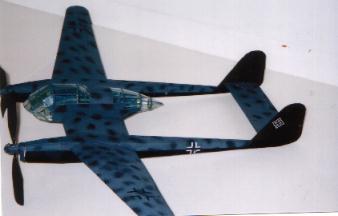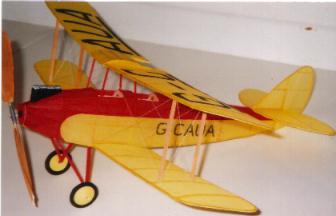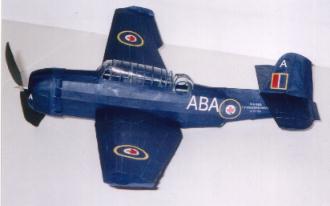Aviatik C1
This Aviatik model was built with a concentration on lightness more than
scale. This peanut model is quite light and slow and trimming is coming along nicely.
It is covered with Japanese tissue dyed with tea (Orange Peko),
on one side only of the wings. The wheels are black meat-tray foam
tires over balsa rims tied to an aluminum hub via silver thread spokes.
The Maltese insignia were printed, on an ink jet printer, separately,
on white tissue.
- wingspan: 13 inch
- weight: ~3.5g
- power: 1 strands of 1/32 inch
- design: John Cooper
- built: 2003
-----------------------

